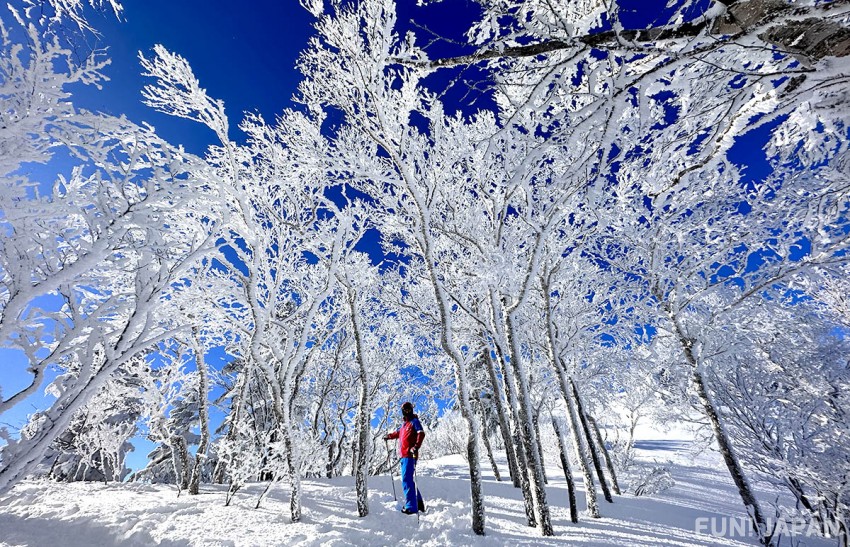
Blessed with a great climate and a beautiful natural landscape, Japan’s geographically diverse Tohoku region is known for its unique scenery, delicious fresh fruit, and stunning sea views.
Tohoku officially consists of six prefectures: Aomori, Iwate, Akita, Yamagata, Miyagi and Fukushima. This exciting 4-day and 3-night itinerary covers the highlights of Iwate and Aomori Prefectures; it is perfect for a first or even second visit to Tohoku. The Japan National Tourism Organization's Unveiling a New Japan | Captivating Experiences campaign introduces exciting trip itineraries that are suitable even for seasoned travellers of Japan.
Tohoku Region: Iwate and Aomori Recommended Itinerary
Day1 | Kamaishi Daikannon Temple => Jodogahama Beach => Overnight stay in Miyako City |
Day 2 | Miyako City ⇒ Lunch (bindon) ⇒ Ryusendo Cave ⇒ Overnight stay around Morioka Station |
Day 3 | Morioka Station ⇒ Appi urushi painting workshop (Hachimantai Museum) ⇒ Appi Kogen Ski Resort ⇒ Overnight stay at Appi Kogen |
Day 3 another | Appi Kogen ⇒ Hachimantai, Appi Kogen incline cross-bike trip ⇒ Overnight stay in Morioka City |
Day 4 | Morioka City ⇒ Aomori Prefecture Culture and Tourism Facility: Nebuta Museum Wa-Rasse ⇒ Tsugaru Railway Stove Train ⇒ Dazai Osamu Memorial Hall Shayokan, Tachineputa Museum in Goshogawara ⇒ Overnight stay in Aomori City |
Take the Stove Winter Train to the world of silver.
Singapore: https://www.japan.travel/en/sg/japan-activities/tohoku/itineraries-3/
Philippines: https://www.japan.travel/en/ph/japan-activities/tohoku/itineraries-3/
Unveiling a New Japan | Captivating Experiences Official Website
Singapore: https://www.japan.travel/en/sg/japan-activities/
Philippines: https://www.japan.travel/en/ph/japan-activities/
Iwate Area
【Sightseeing spot】Kamaishi Daikannon Temple: see a giant Bodhisattva Kannon statue overlooking a romantic ocean panorama

At the highest point of the Kamasaki peninsular, a 48.5-metre-tall white statue of the Bodhisattva Kannon stands peacefully watching over the glittering ocean of Kamaishi Bay. This majestic Buddhist temple is one of Japan’s “33 Kannon Statues” and Odaira Town’s most cherished tourist spot.
The interior of the giant statue is divided into 13 floors, with the womb area holding a shrine for the 33 Kannon and the seven Gods of Good Fortune. Floors 11 and 12 have observatory areas for viewing the stunning panoramic ocean scenery. There are also plenty of beautiful photo spots around the rest of the temple grounds, as well as booths selling unique good luck charms and omikuji fortune slips. Enjoy the breath-taking sight of the Daikannon standing tall against the bright blue sky and soak up the calm atmosphere at this scenic temple spot.
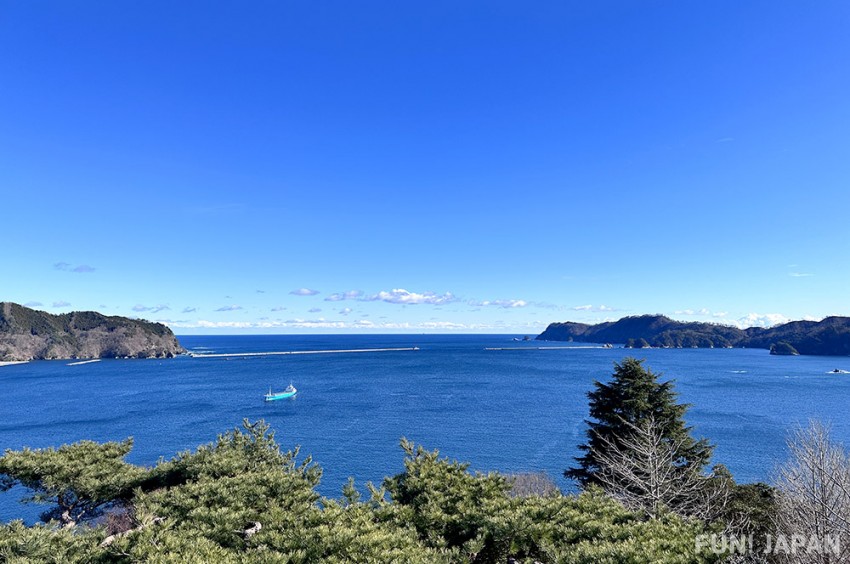
Kamaishi Daikannon Temple
- Address: 3-9-1 Odaira-cho, Kamaishi-shi, Iwate Prefecture
- Opening hours: 9:00 – 17:00 *Subject to change depending on the season
- Access: A short walk from Kamaishi Daikannon Iriguchi bus stop or 10 minutes’ walk from Kannon Iriguchi bus stop on the Iwate Kotsu Bus from Kamaishi Station
- Official website: http://kamaishi-daikannon.com/
【Sightseeing spot】Jodogahama Beach: take in a truly heavenly view
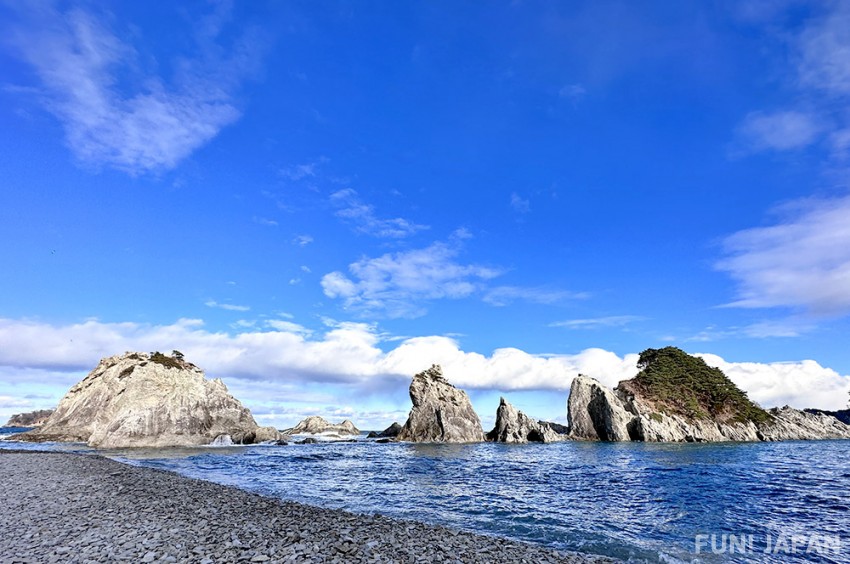
Jodogahama is part of Sanriku Fukko National Park in Miyako City, Iwate Prefecture. Visitors to this beach can enjoy many rare geological features and crystal-clear water, making it a popular swimming spot for locals during the summer. In winter, the landscape transforms into a mystical snow-covered wonder, perfect for snapping iconic nature photos. With so many scenic views all year round, it’s easy to see why Jodogahama is a nationally designated Place of Scenic Beauty. At Jodogahama, visitors can ride sightseeing boats, enjoy magnificent views of the rias coast from the grand observation deck, or take a traditional sappa boat tour of the famous Blue Cave and its surrounding scenery. The sight of Jodogahama’s famed emerald blue sea makes this coastal region truly feel like heaven on earth.
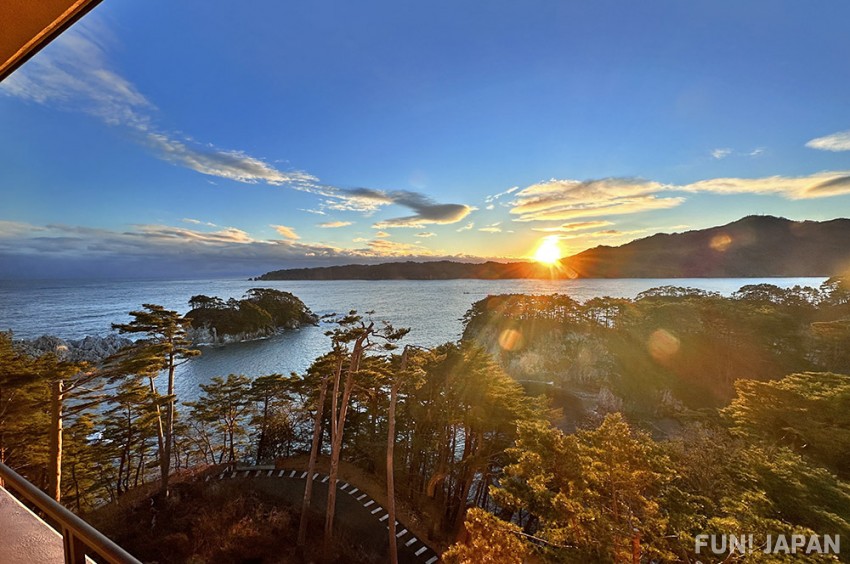
Jodogahama Beach
- Address: 32-69 Hitachihama-cho, Miyako-shi, Iwate Prefecture
- Access: A short walk from Oku Jodogahama bus stop on the Iwate Kenpoku bus from Miyako Station
- Official website: https://www.city.miyako.iwate.jp/kanko/jyoudogahama.html
【Gourmet cuisine】Bindon: try Miyako’s famous seafood bowl and ochazuke delicacies all in one delicious meal
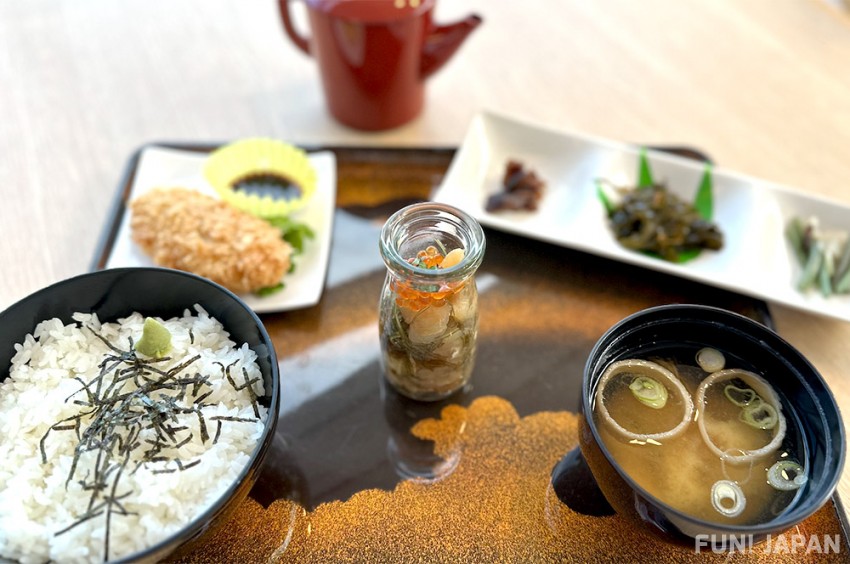
Along the shorelines of Iwate Prefecture, it’s somewhat of a local custom to store sea urchin and other freshly caught seafood inside glass milk bottles filled with sterilized seawater. This regional storage method seals in freshness, flavour and texture, forming the base for Iwate’s most famous seafood delicacies that can’t be experienced anywhere else in Japan. The bindon, or “rice bowl in a bottle”, was created as an ode to this local custom, using milk bottles filled with fresh seasonal seafood from Miyako as toppings for rice. Typical ingredients include salmon, cod, salmon roe, squid and sea urchin.
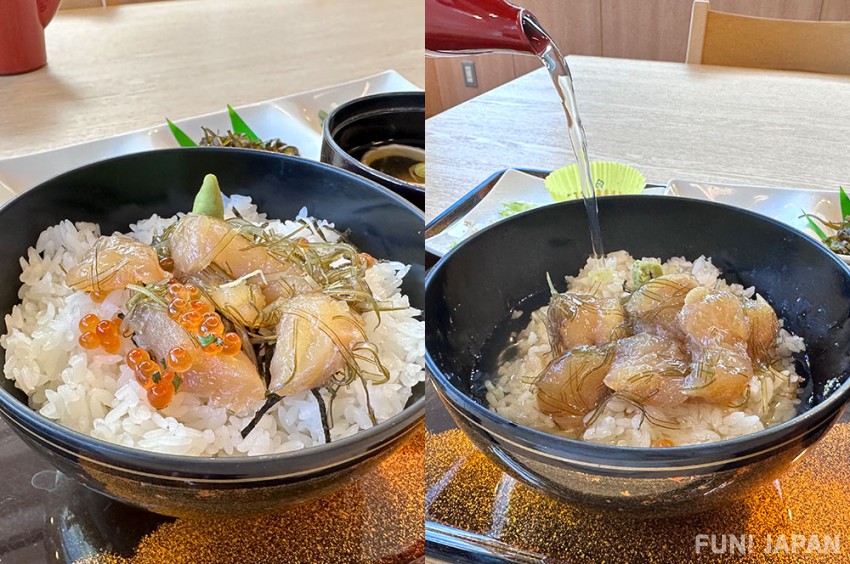
The recommended way to eat bindon is to first pour half the toppings from the milk bottle onto the rice and drizzle with soy sauce and a touch of wasabi. After finishing the first half of the toppings, add the rest to the rice bowl and pour over hot green tea and stock. Feel free to customize it any other way you like, and make sure to take your time to savour the ultra-fresh taste.
Official website: Miyako Association of Tourism and Culture
https://kankou385.jp/special_kiji/4482/
【Sightseeing spot】Ryusendo Cave: majestic natural beauty at one of the three great limestone caves of Japan
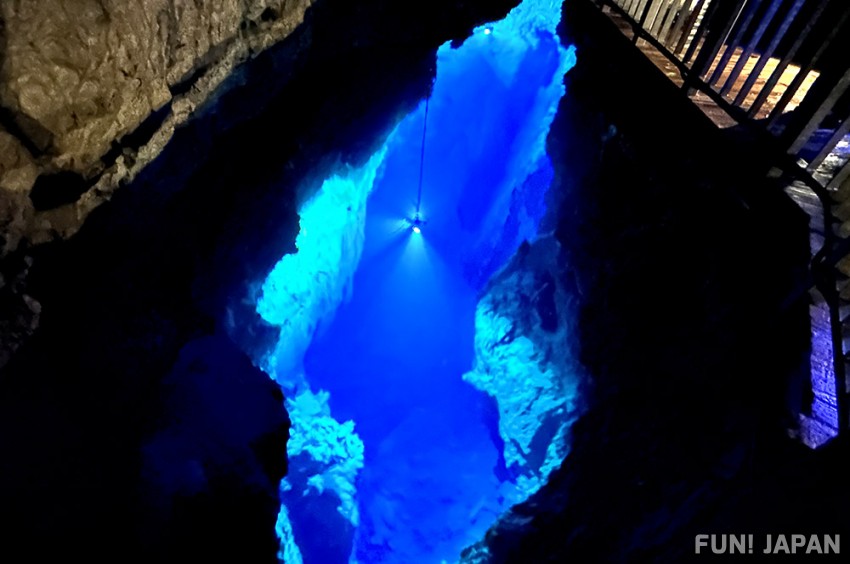
Ryusendo Cave is one of Japan’s three largest limestone caves, along with Akiyoshido Cave in Yamaguchi Prefecture and Ryugado Cave in Kochi Prefecture. This giant natural wonder and the rare bats that call the cave home are designated a national natural monument.
The water quality of the underground lake inside Ryusendo Cave is unparalleled, shining a breathtakingly deep azure blue when light hits the water’s surface. Humidity levels inside the cave are high, and the underground route is long and winding. However, the arrows and information boards ensure visitors can explore this mysterious limestone world safely and easily.
Researchers have officially uncovered a total of 4,088 metres of caves at Ryusendo, of which 700 metres is open to the public. However, ongoing studies suggest there may be even more to this giant cave than originally thought, with estimates indicating the actual figure may be over 5,000 metres.
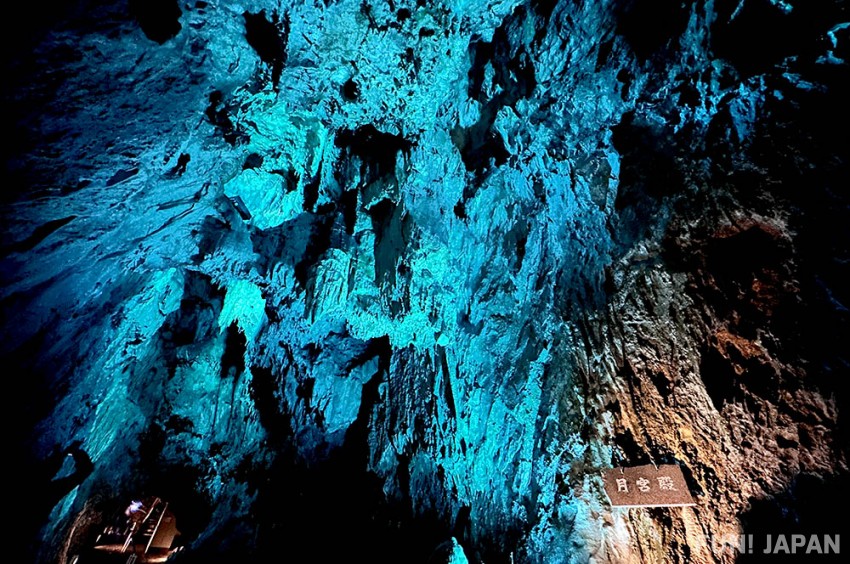
Ryusendo Cave
- Address: 1-1 Aza Kannari, Iwaizumi-cho, Shimohei-gun, Iwate Prefecture
- Opening hours: 8:30 – 17:00
- Entry fee: Adults (age 15 and over) ¥1,100, Children (age 14 and under) ¥550
- Access: A short walk from Ryusendo-mae bus stop on the JR bus from Morioka Station (approximately 2 hours 15 minutes)
- Official website: http://www.iwate-ryusendo.jp
【Experience and sightseeing】Appi urushi painting workshop and Hachimantai Museum: paint your very own chopsticks with traditional Japanese lacquer
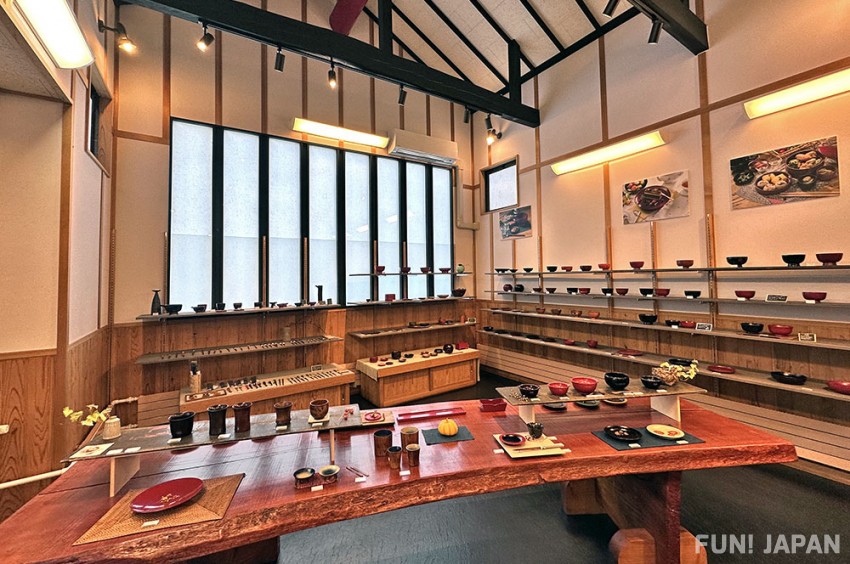
The northern Tohoku region, including the Appi district of Hachimantai City, has been one of Japan's leading lacquer production areas since the Jomon period (14,500 BCE to 300 BCE), producing high-quality lacquerware with excellent transparency, colour and hardness.
The Appi Urushi Lacquerware Studio carries on this ancient tradition in a fully authentic way. The studio uses 100% domestically produced natural materials for both the wood and lacquer used in their products, which include beautiful tableware, plates and bowls. Appi-style urushi is simple and sophisticated, with a rich use of colour and tone for a truly timeless look.

Plenty of these beautiful products are on display and available for purchase in the studio, and visitors can also try their hand at an Appi urushi lacquerware workshop. Right next door, the Hachimantai Museum exhibits beautiful historical artefacts, locally excavated earthenware and clay figures, and interesting information on the culture of Appi urushi and modern agriculture.
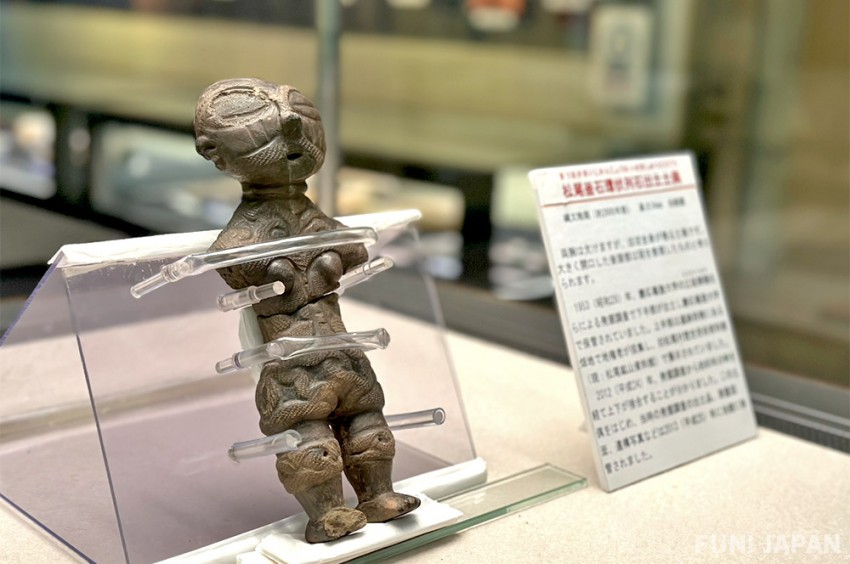
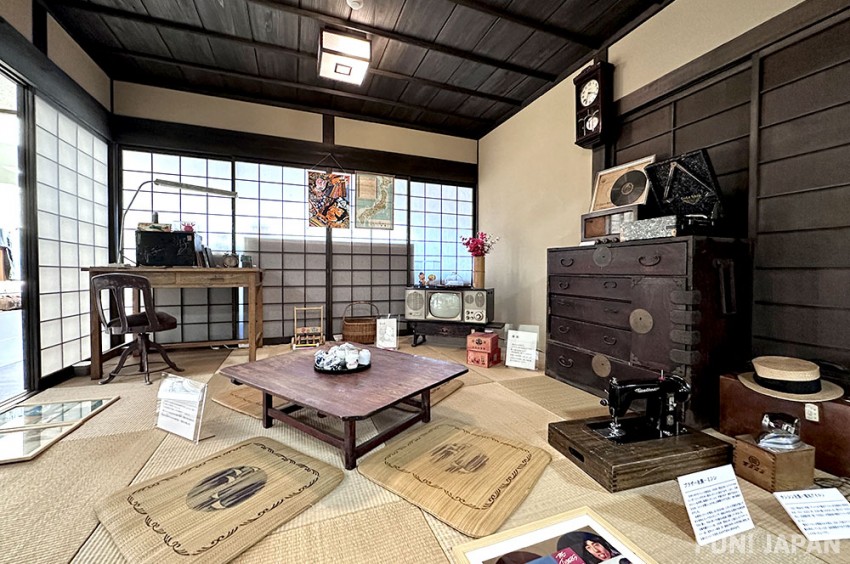
Appi Urushi Painting Workshop
- Address: 230-1 Kamasuda, Hachimantai, Iwate Prefecture
- Opening hours: 9:30 – 17:00, Tuesday – Sunday
- Closed: Mondays (open in the case of national holidays), new year period
- Access: 10 minutes’ walk from Arayashimmachi Station
- Official website: https://www.appiurushistudio.com
Hachimantai Museum
- Address: 230 Kamasuda, Hachimantai, Iwate Prefecture
- Opening hours: 9:00 – 16:30 (last admission 16:00), Tuesday – Sunday
- Closed: Mondays (open in the case of national holidays), new year period from 29 December – 3 January
- Access: 10 minutes’ walk from Arayashimmachi Station
- Official website: https://www.city.hachimantai.lg.jp/site/hachimantaisihakubutsukan
【Experience】Appi Kogen Ski Resort: a snowy haven for skiing, snowboarding and phenomenal onsen hot springs
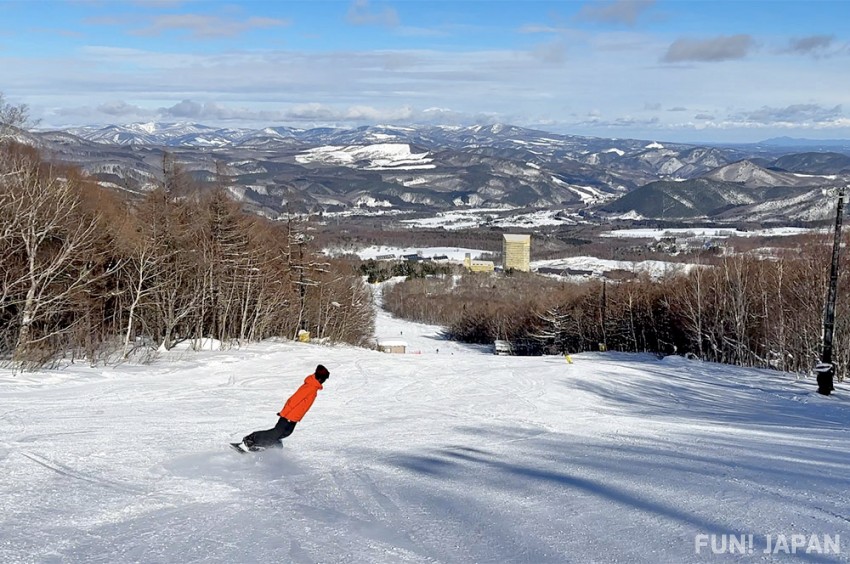
Appi Kogen Ski Resort is the biggest and most famous ski resort in the Tohoku region, with 21 huge courses spanning over 43,100 meters long. This resort isn’t just about snow sports; there is also Kid’s Land for little ones and a snowshoe-walking tour perfect for taking in the beautiful winter scenery.
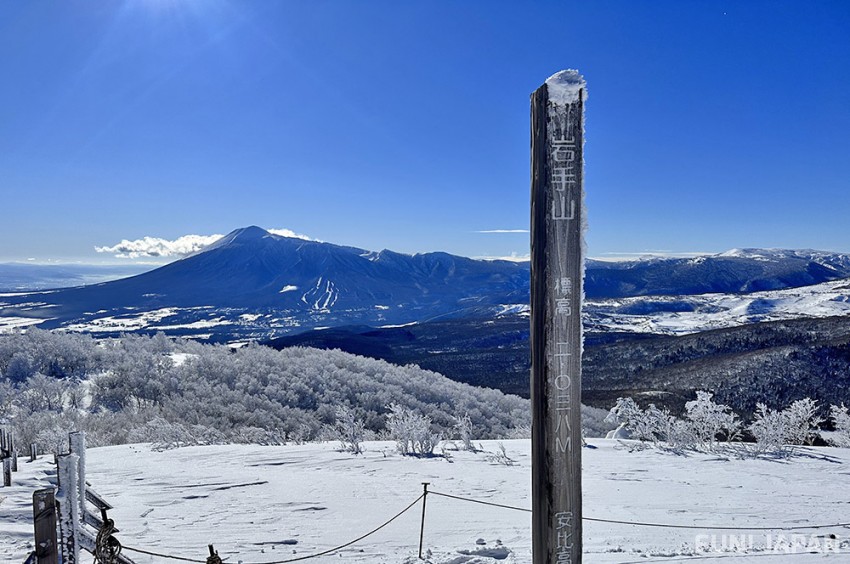
The breath-taking scenery at this ski resort makes for amazing selfies and trip photos. In particular, the view of the frost-covered trees at the top of the gondola is highly recommended. On clear days, you will be greeted with a direct view of Mount Iwate and neighbouring Aomori Prefecture. Breathe in the fresh mountain air and feel the soft powder snow under your boots as you relax in this winter paradise.
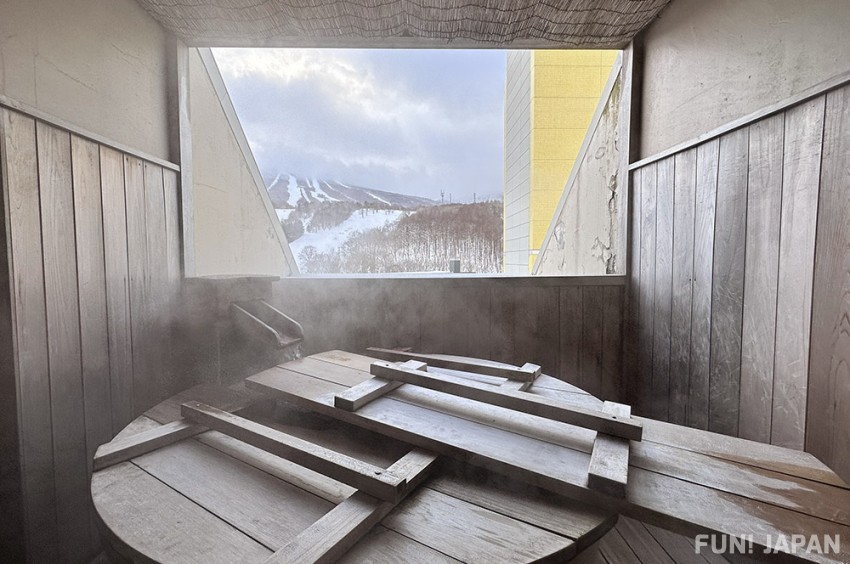
The ski resort has its own official hotel with a restaurant and natural onsen hot spring. There is a ski rental store on site, so there is no need to bring heavy and bulky equipment with you; everything you need for skiing or snowboarding can be rented out.
Appi Kogen Ski Resort
- Address: Appi Kogen, Hachimantai-shi, Iwate Prefecture
- Opening hours: Lifts and gondolas 8:30 - 17:00, subject to daily change. Check the website for the latest operation schedule
- Access: A short walk from Crown Plaza bus stop on the shuttle bus from JR Appi Kogen Station (no reservation required)
Winter fun in the Appi Highlands
Singapore: https://www.japan.travel/en/sg/japan-activities/activities/418/
Philippines: https://www.japan.travel/en/ph/japan-activities/activities/418/
【Gourmet】Wanko Soba: Morioka’s famous eating contest-style dining experience

Have you ever seen an eating contest on a Japanese variety show? This fun restaurant in Morioka will recreate the excitement for you! Servers bring out bowl after bowl, each filled with around one mouthful of soba buckwheat noodles. Keep piling up the plates as the servers cheer you on in an eating contest style. Feel free to take it at your own pace and experiment with different toppings for each bite, such as tuna sashimi, nameko mushroom, wasabi, nori seaweed, sesame seeds, pickles or spring onion. Around 15 plates are the same amount as one adult serving of soba, but customers can eat as much as they like.
Pour any excess soup into the big bowl in the middle of the table to discard it, and when you’ve had your fill of noodles, put the lid back on to the bowl to signal to the server that you’ve finished before they bring another plate out. Once the server acknowledges this, you can remove the lid again to finish up your last mouthful of noodles.
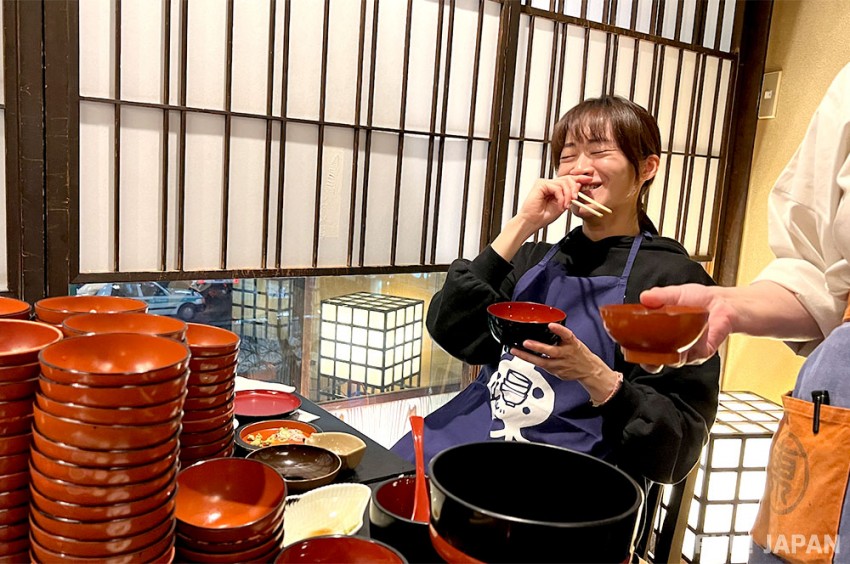
Watch out for the ultra-fast reflexes of the servers, who offload plate after plate of noodles. If you’re not quick enough when closing the lid, they can sneak a bowl in front of you in a flash! It may come down to a hilarious battle between you and the server. Don’t miss this one-of-a-kind dining experience at Azumaya Wanko Soba restaurant by Morioka station.
Soba Restaurant Azumaya
- Address: 2F, 8-11, Ekimae-dori, Morioka Ekimae-dori, Morioka-shi, Iwate Prefecture (Exit A1 of the station underpass)
- Opening hours: Lunch 11:00 - 15:00; dinner 17:00; last order 19:00
- Access: 2 minutes’ walk from JR Morioka Station
- Official website: https://wankosoba.jp
Aomori Area
【Sightseeing spot】Aomori Prefecture Culture and Tourism Facility: Nebuta Museum Wa-Rasse: learn about Tohoku’s biggest summer festival and see the amazing floats up close
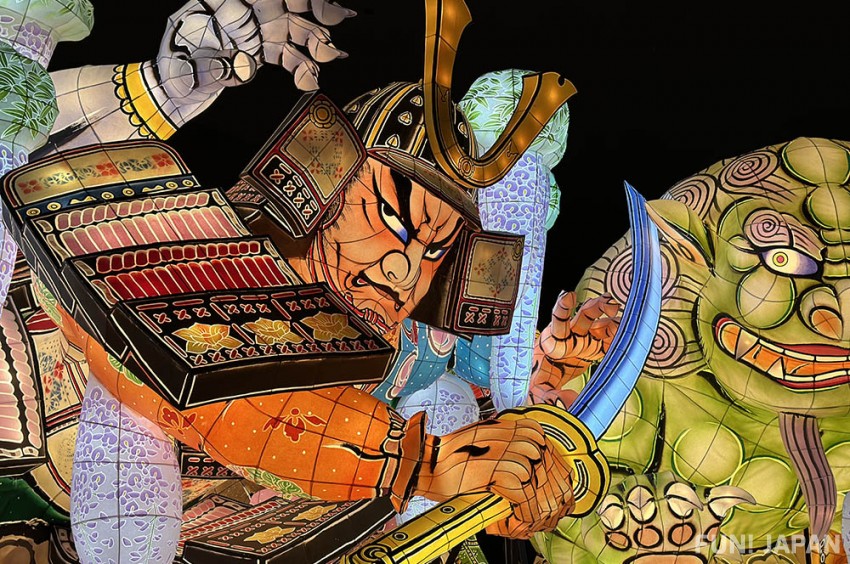
Aomori Nebuta Matsuri is a summer festival that takes place every year from 2 to 7 August. This huge event is a fusing of the Chinese Tanabata Festival custom of floating paper lanterns down a river and Tohoku’s unique ritual to banish a sleep demon.
In the days before modern machinery, nebuta or “sleepiness” in the Tohoku dialect, was said to be the enemy of agricultural workers. Every summer, before the start of the autumn harvest, locals would work together to drive out sleep demons from the town, leading to the creation of Nebuta Matsuri. Now, every year, over twenty giant Nebuta floats are paraded through the streets alongside singers and dancers.
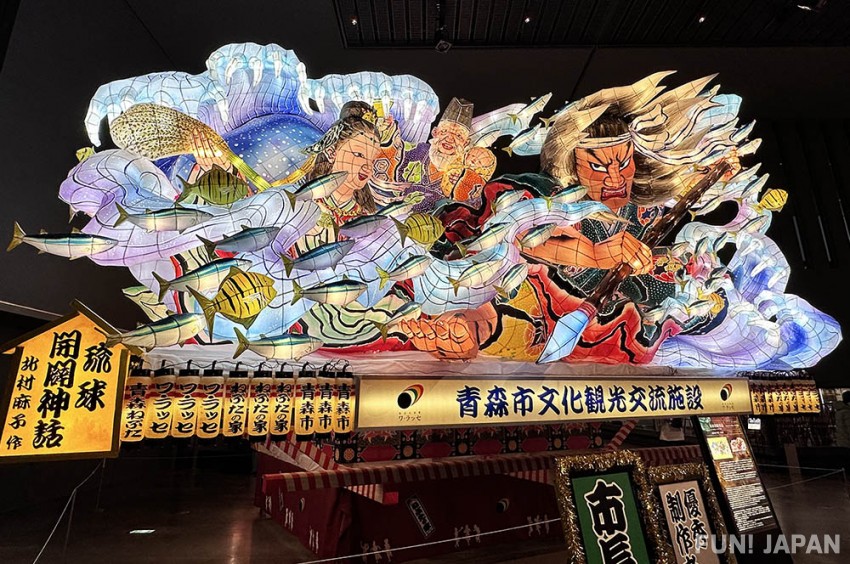
Nebuta Museum Wa-Rasse is a fascinating place to see some of the best floats up close and learn about the history of Nebuta Matsuri and the float creation process. Each Nebuta has a flamboyant colour scheme and amazing three-dimensional effects that impress from every angle. Many Nebuta tell stories of ancient legends or myths in their artwork. See if you can work out what’s going on in the vivid designs.
The museum shop sells lots of interesting Nebuta-inspired goods, such as original t-shirts, tote bags and Nebuta masks. With so many cute and funny items available, it’s easy to float away on a Nebuta wave!
Aomori Prefecture Culture and Tourism Facility: Nebuta Museum Wa-Rasse
- Address: 1-1-1 Yasukata, Aomori-shi, Aomori Prefecture
- Opening hours: 9:00 – 18:00 (From May – August: 9:00 – 19:00); last admission 30 minutes before closing
- Closed: 31 December, 1 January, 9 August, 10 August
- Access: 1 minute’s walk from Aomori Station
- Official website: http://www.nebuta.jp/warasse/foreign/hantai.html
【Experience and sightseeing】Winter trip on the Tsugaru Railway Stove Train: a classic train perfect for the snowy landscapes of Tohoku
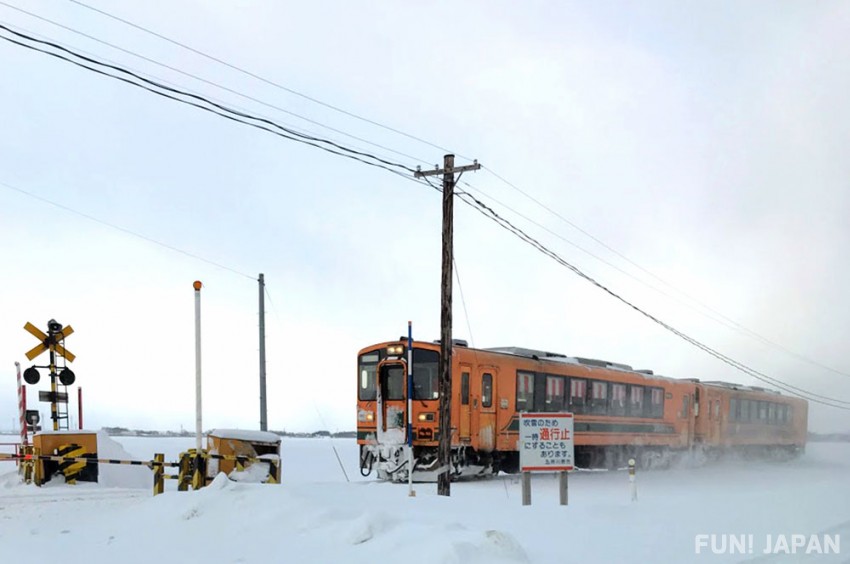
The Tsugaru Railway runs from Goshogawara Station to Nakasato Station for a total length of about 20 km, or about 45 minutes one way. In summer, the train is decorated with wind chimes, and in autumn, the sound of bell crickets. However, the winter stove train is most recommended for a magical railway experience.
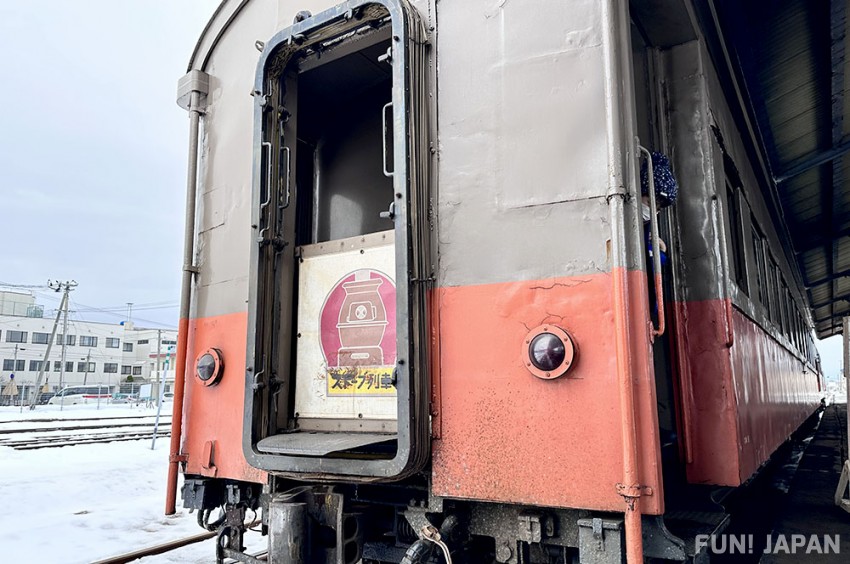
Stove trains run each winter from December to March. These retro locomotives are equipped with an old-fashioned potbelly stove inside the carriage, perfect for cosying up while you watch the beautiful winter scenery fly by outside the window.
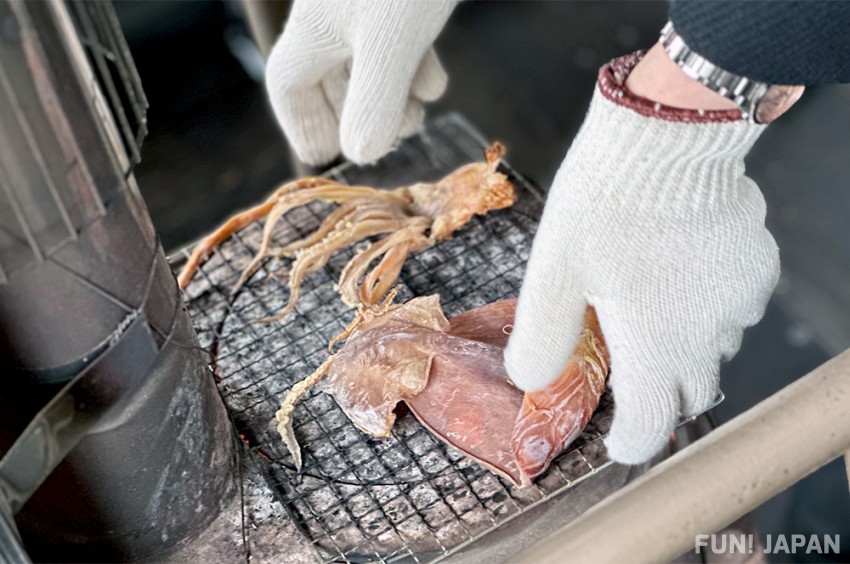
Dried squid and cuttlefish are also available inside the train as a stove-top snack. Staff will bring a small grill on which to cook the seafood, and you can sit back, relax and listen to the soothing crackling and sizzling of the delicious food being prepared. Tuck into your delicious toasted dried squid or a bento box, have a drink of saké, and take in the beautiful white snowy views as the train gently trundles along the tracks.
Enjoy the nostalgia of Tsugaru’s Stove Train
Singapore: https://www.japan.travel/en/sg/japan-activities/activities/421/
Philippines: https://www.japan.travel/en/ph/japan-activities/activities/421/
【Sightseeing spot】Dazai Osamu Memorial Hall Shayokan: visit the family home of one of Japan’s most famous authors
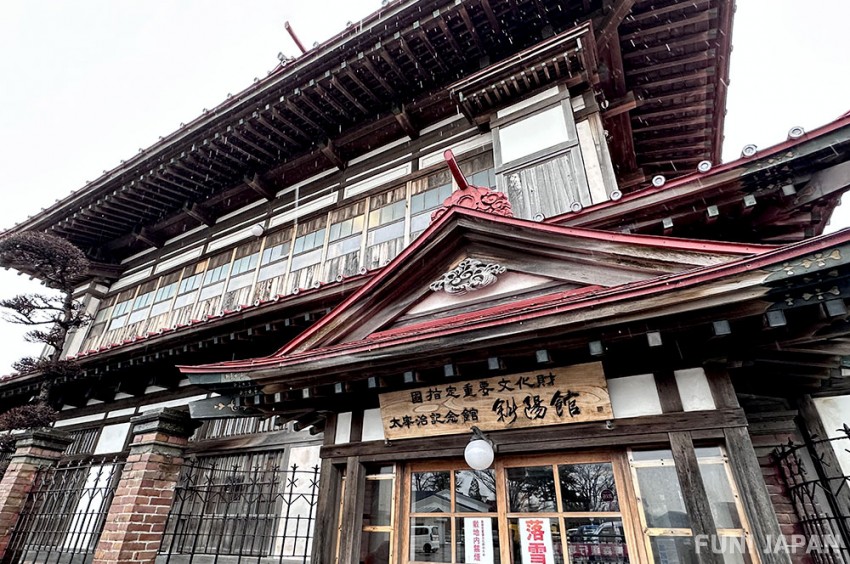
The Japanese novelist Osamu Dazai (real name: Shuji Tsushima) is known for literary masterpieces such as Ningen Shikkaku (No Longer Human) and Shayo (The Setting Sun). His books are still extremely popular in Japan today, and his strong personality and legendary life were even dramatized for Japanese TV.
Shayokan, located in Kanagi town in Goshogawara, is the former Tsushima family home where Osamu Dazai was born and raised. Built in 1907, the huge mansion has 19 rooms on the first and second floors, a rice warehouse, Japanese garden, and other outbuildings, too!
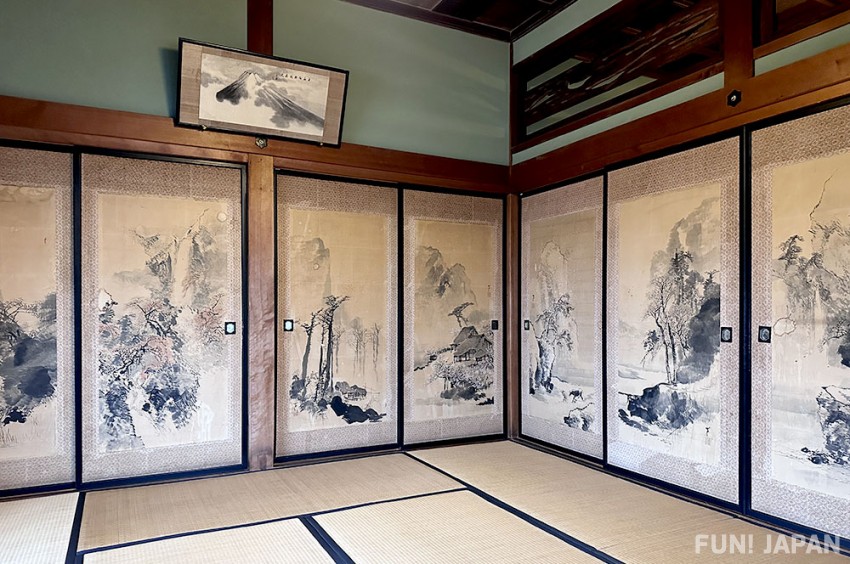
In addition to showcasing the living space of the Tsushima family, the museum also exhibits photos of Osamu Dazai growing up, his favourite possessions, his literary works and rare manuscripts.
Dazai Osamu Memorial Hall "Shayokan"
- Address: 412-1 Asahiyama, Kanagi-cho, Goshogawara-shi, Aomori Prefecture
- Opening hours: April – September 9:00 – 17:30; October – March 9:00 – 17:00 (last admission 30 minutes before closing)
- Access: 7 minutes’ walk from Kanagi Station on the Tsugaru Railway Line
- Official website: https://dazai.or.jp/
【Sightseeing spot】Tachineputa Museum: see a spectacular giant Neputa puppet
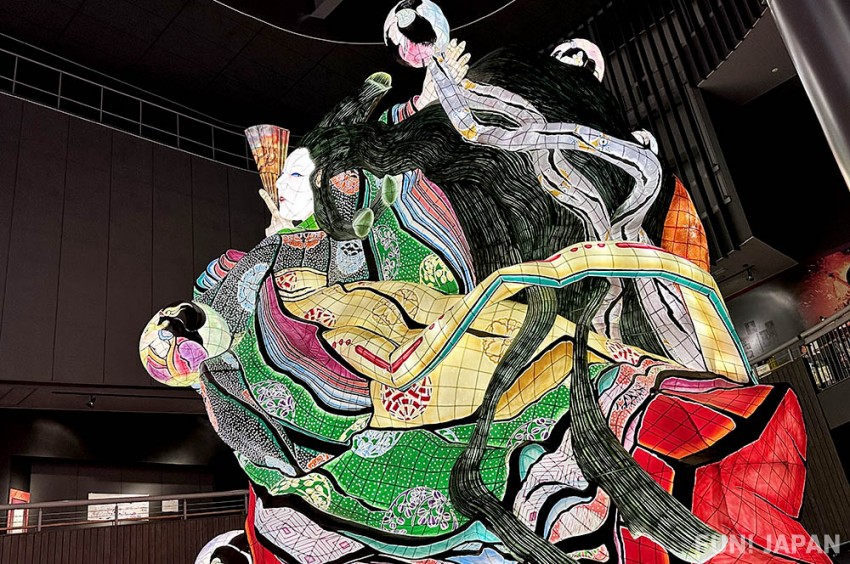
Goshogawara’s Tachineputa refers to a 23-metre-tall, 9-ton Nebuta float. Each year, this amazing museum sets about building a giant human-shaped Nebuta float, which it then sends to Goshogawara's summer Tachineputa Festival.
The museum contains extensive exhibits on this unique summer festival, and the fourth-floor movie theatre showcases related documentaries under the watchful eye of two giant and eerily realistic Tachineputa. Visitors can also enjoy 360-degree views of the Tachineputa up close by walking down a spiral pathway from the 1st to 6th floors. The intricate designs and vivid colours of these traditional Japanese floats are truly a sight to behold.
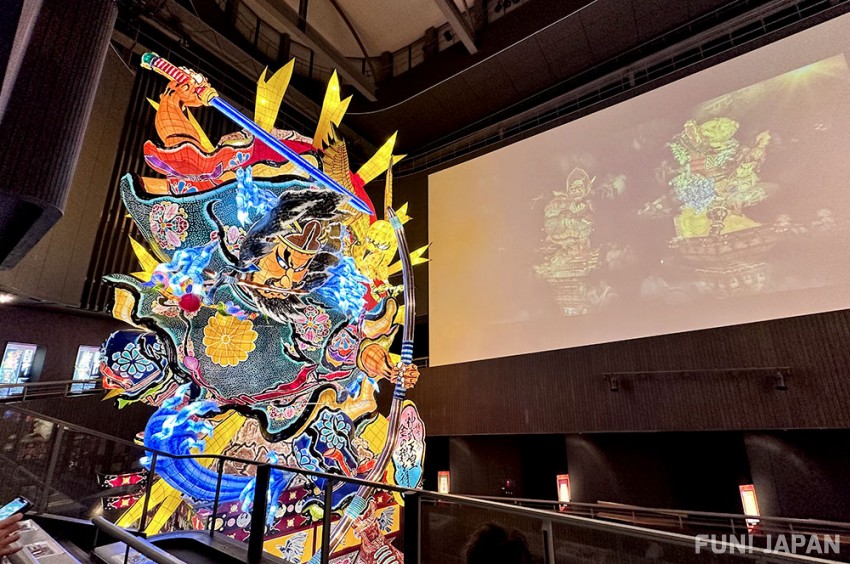
Tachineputa Museum
- Address: 506-10 Omachi, Goshogawara-shi, Aomori Prefecture
- Opening hours: 9:00 – 17:00 (last admission 30 minutes before closing)
- Access: 5 minutes’ walk from JR Goshogawara Station
【Gourmet】Hotate Gozen: nutritious and delicious - traditional Japanese food with a luxury twist
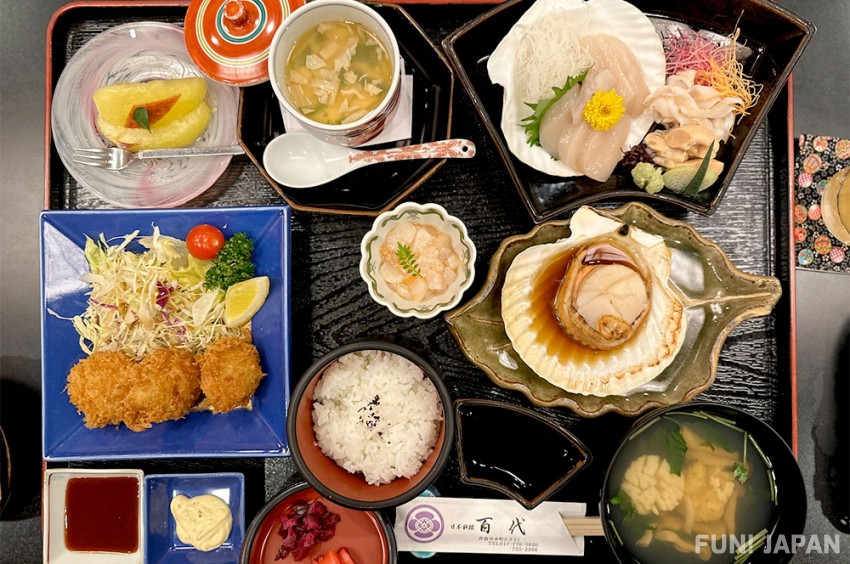
Mutsu Bay enjoys frequent cool ocean currents that bring abundant minerals and phytoplankton into the area. The scallops cultivated in this region feast on the natural phytoplankton swarms, resulting in juicy, tender meat that can be enjoyed raw, deep-fried, sautéed in butter, stewed and more! Aomori scallops make the perfect luxury accent to Japanese, Chinese and Western cuisine. Plus, they are low in fat and packed full of nutrients such as B12 and taurine, all the more reason to indulge!
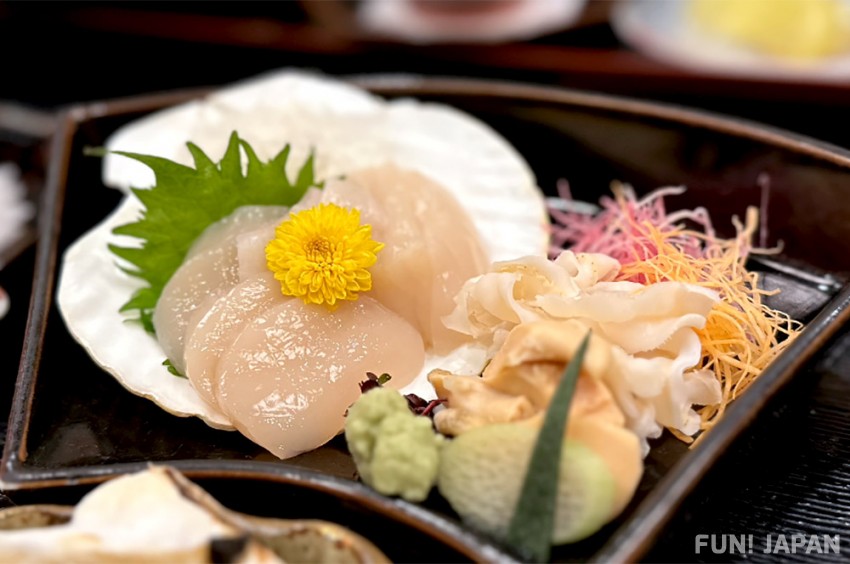
Japanese restaurant Momoyo in Aomori city offers a fantastic hotate gozen, scallop mega assortment featuring scallop sashimi, scallop butter sauté, scallop soup, deep-fried scallops, scallop pickles and a savoury steamed scallop egg-custard. Savour all the different flavour profiles of Japan’s most famous scallops with this decadent selection of delicious Japanese dishes - perfect for scallop lovers or those interested in traditional Japanese cuisine.
Japanese Restaurant Momoyo
- Address: 2-3-11 Honcho, Aomori-shi, Aomori Prefecture
- Opening hours: Lunch 11:00 - 14:00, Dinner 17:00 - 22:00, open every day.
- Access: 5 minutes by taxi from JR Aomori Station
The Japan National Tourism Organization campaign, Unveiling a New Japan | Captivating Experiences showcases many more exciting regional activities and must-see spots throughout Japan. Why not include the snowy paradise of the Tohoku region on your next trip plan? See the website for more information and inspiration to make your return trip to Japan an unforgettable experience.
Take the Stove Winter Train to the world of silver.
Singapore: https://www.japan.travel/en/sg/japan-activities/tohoku/itineraries-3/
Philippines: https://www.japan.travel/en/ph/japan-activities/tohoku/itineraries-3/
Unveiling a New Japan | Captivating Experiences Official Website
Singapore: https://www.japan.travel/en/sg/japan-activities/
Philippines: https://www.japan.travel/en/ph/japan-activities/
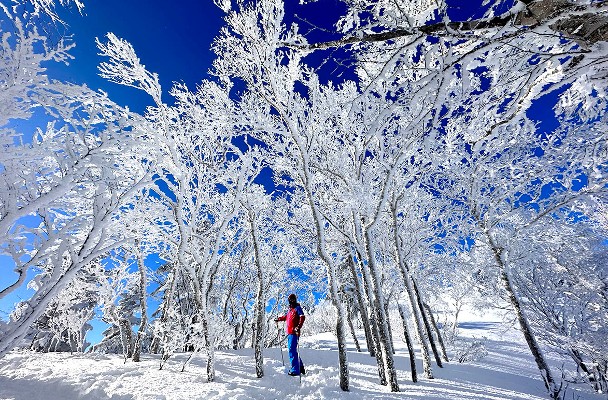
Comments